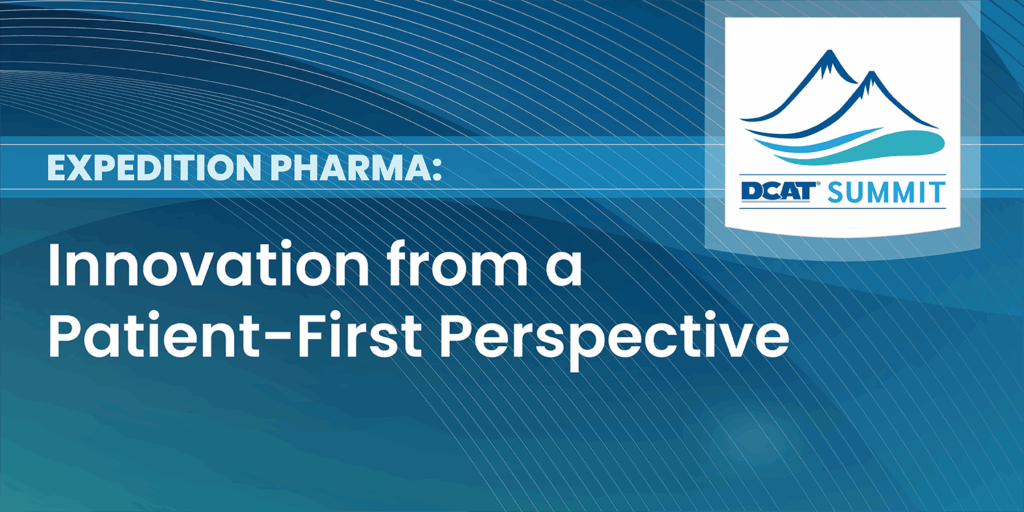DCAT Summit at Lugano Recap: Innovation at the Foundation of Pharmaceutical Development & Manufacturing

In the race to deliver medicines faster, the industry’s next leap forward is being built—literally—at the ground floor of development and manufacturing. At the DCAT Summit at Lugano, “Expedition Pharma: Innovation from a Patient-First Perspective,” held June 4–5, 2025 in Lugano, Switzerland, industry speakers revealed how speed, scalability, and sustainability are being redefined at the very core of bio/pharmaceutical production.
Building capacity: modular biomanufacturing
Jordan Ulrich, Vice President of Project Delivery and Capital Projects at Fujifilm Biotechnologies, and Dana Tilley, Senior Vice President and General Manager for Life Sciences North America at Jacobs Engineering, described their work to address a bold challenge: to significantly increase Fujifilm Biotechnologies’ biologics capacity in just four years. Their answer combines modular “cloned” facilities with integrated digital design, inspired by models in semiconductors and data centers. The approach standardizes layout and process across sites on two continents. “When you’re standing at the bioreactor, you shouldn’t know whether you’re in Denmark or North Carolina,” Ulrich noted. By running multiple projects in parallel and enforcing rigorous change control, they have cut engineering time and construction schedules by up to 20%, translating speed into earlier patient access.
The biggest challenges in modularization were not technical; they were cultural, with competing engineers on both sides of the Atlantic. “Things really changed when we stopped thinking of our sites as independent and started thinking of them as a single site with multiple locations,” Ulrich said. “That seems simple, but it was core to modularization.”
Flow chemistry for API production
Giorgio Bertolini, General Manager Italy at Flamma Group, explained how flow chemistry can meet the dual demands of speed and sustainability for small-molecule active pharmaceutical ingredients (APIs), especially in the era of precision medicine. Continuous manufacturing enables rapid scale-up from grams to hundreds of kilos without redesigning processes, delivering consistent quality, and achieving safer handling of challenging chemistries. “If we can’t scale it, the drug stays on the lab bench, with no impact on human health,” Bertolini reminded the audience. In one case study, shifting from batch manufacturing to flow chemistry increased yield by 13%, cut raw material costs by 20%, reduced waste by 75%, and shortened cycle time by nearly two-thirds—demonstrating that sustainability gains can also accelerate time-to-market.
Closing the loop on precious metal catalysts
Antonio Zanotti-Gerosa, R&D Director for Life Science Technology at Johnson Matthey, explained that precious metal-based catalysts, such as platinum group metals (PGMs), can be applied to support sustainability goals. Today, 57% of PGMs used to manufacture new products come from recycling, and in closed-loop industrial applications, recovery rates can exceed 90%. Recycled PGMs have less than 3% of the carbon impact of mined metal, and catalyst recovery directly cuts cost. “Design for recycling from the very beginning—don’t treat it as an afterthought,” Zanotti-Gerosa said. His takeaway: Sustainability and process economics share the same optimization pathway.
Designing for patient accessibility
Justin Schroeder, Vice President of Global Technical Services, PCI Pharma Services, underscored that combination drug–device products, particularly for self-administration, require careful integration of drug, device, and packaging—right from the beginning. Companies often want to rush to Phase I, but early decisions, such as container choice, can determine whether a product can later transition into a patient-friendly device. Making drug administration easy can also improve the path through the clinic. “A good patient experience drives adherence, and adherence drives improved health outcomes,” Schroeder said.
Using digital twins for achieving sustainability goals
Looking ahead to the ever-accelerating gains of digitalization, speakers zeroed in on the power of digital twins—complete digital replications of an entire facility. “Digital twins provide an opportunity to pressure test systems, to break things and see how they react, to implement different solutions,” said Fujifilm Biotechnologies’ Ulrich. From a sustainability perspective, a digital twin enables teams to test solutions, such as water-recovery systems, without interrupting production.
Building for the future
For an industry facing rising complexity and global demand, these talks reinforced the gains available from addressing tough challenges. The future supply chain will be built on modular designs, sustainable chemistry, circular resource use, and patient-ready delivery, and the companies embedding these principles now will be the ones setting the pace tomorrow.
Note: This is part of a series of articles providing key highlights and insights from the DCAT Summit at Lugano: Expedition Pharma: Innovation from a Patient-First Perspective, which was held June 4–5, 2025, in Lugano, Switzerland.
See here for Part I, Driving Value through Patient-Centricity in Drug Development and the Supply Chain

